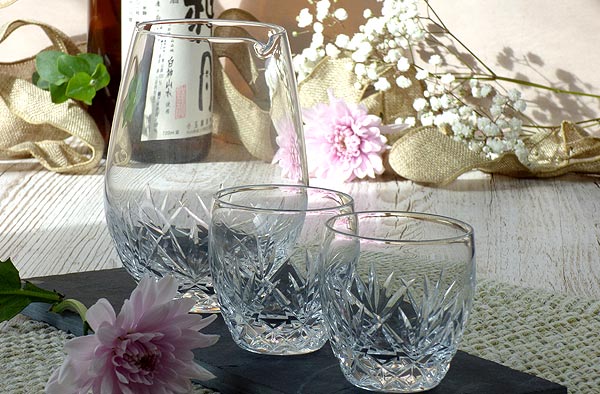One of the latest additions to my shop is a pour-over coffee set, comprising a glass jug, wooden stand and ceramic filter holder. They're beautiful to look at but can be a bit daunting to use for the first time.
I love to drink good coffee and have recently converted from using my old cafetiere to this new pour-over jug. I was getting fed up with scrubbing away at the mesh plunger and messing around with trying to get as many of the coffee grounds in the food waste bin rather than down the sink! These pour-over sets are a doddle to wash up (I do it by hand but the jug and filter holder are dishwasher safe) and to dispose of the grounds you just lift out the filter.
If you’re used to using a cafetiere or are new to making fresh coffee in a jug then you may not be sure how to get the best out of your new pour-over coffee set. Therefore, I wanted to write this blog to give you some tips about how to make perfect pour-over or drip coffee.
Now, I like a good cup of coffee but I’m no expert so I thought I would ask one! My friend David Higgins is the owner of H R Higgins (Coffee-man) Ltd, purveyors of fine coffee and teas in Mayfair, London, and definitely an expert so here are his tips for making delicious coffee using the pour-over method.
What is the difference between pour-over coffee and coffee made in a cafetiere?
It’s usually easy to tell whether a cafetiere or pour over has been used to make a cup of coffee. Cafetiere brewed coffee always looks more cloudy because the grounds stay at the bottom of the glass and some of the smaller pieces go through the metal gauze filter.
Pour-over coffee tends to be clear, because none of the grounds end up in the cup, and has a cleaner flavour.
What type of coffee and what grind would you recommend for pour-over coffee?
The grind setting makes a huge difference when making pour-over coffee.
The coarser the grind the weaker the coffee but too fine and the water won’t flow. We recommend using a fine grind which should feel a little clumpy but still have a looseness about it so it doesn’t all stick together.
How much ground coffee should I put in the cone?
Generally we work on a doseage for an 8oz cup (300ml) and normally between 14g and 20g depending on the type of coffee.
For dark and very dark coffee we usually recommend 18-20g ground slightly coarser (our scale number 5) for a powerful cup without it being too muddy or oily in mouth feel.
A lighter coffee would normally be 14g ground slightly finer (number 4), or 17.5g ground slightly coarser (4.5).
The lighter roast coffees have more acidity or fruit flavours and you can bring these out in varying degrees by adjusting the doseage and grind. The less coffee you use means it may have the weight of a tea but will have a sweeter, fruitier flavour. By adding more coffee it will be denser and richer but may lose some of the more delicate flavours.
When I make coffee in the cafetiere, I get that nice 'crema' when I pour it into the cup. I don't get that when I use my pour-over filter and jug - is that normal, am I doing it right?
The crema effect that occurs is due to the oils within the grounds separating onto the surface. When you make a cafetiere the grounds stay in the water so the oils naturally form a crema in the top of the glass. Whereas with a pour over this occurs in the cone and the oils don’t pass through into the jug.
What’s your method for making superb pour-over coffee?
- Grind the beans just before making.
- Place the filter paper into the cone and heat the water.
- Wet the filter paper so that the water passes through into the jug to warm the cone and the jug. Then discard the water.
- Measure the coffee into the cone and measure the water into the kettle.
- Heat the water to 92°C. If you don’t have a thermometer, boil the kettle and leave it to stand for 1 minute before pouring.
- First just wet all the grounds. They will bloom, swell up ready to absorb more water.
- Wait 30 seconds then pour in a circular motion just onto the grounds and not onto the paper. Finish with a steady pour into the centre.
- Pause for another 10 seconds or so then repeat. Try to achieve 3 pours before finishing and remove the cone just before the last drop goes through.
This should provide you with a perfect cup.
Many thanks to David for such interesting insights! I'll certainly be able to perfect my technique. You can buy HR Higgins' wonderful coffees and teas at their online shop, or visit their beautiful shop and cafe in Duke Street, London.



